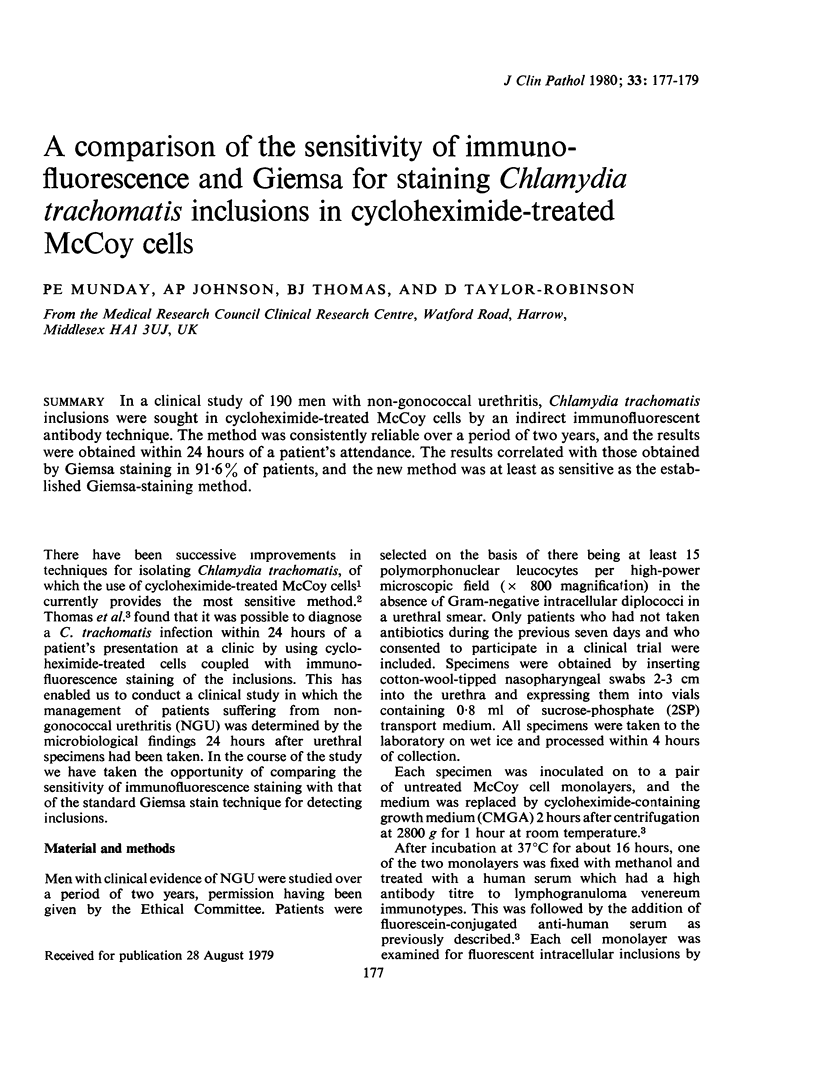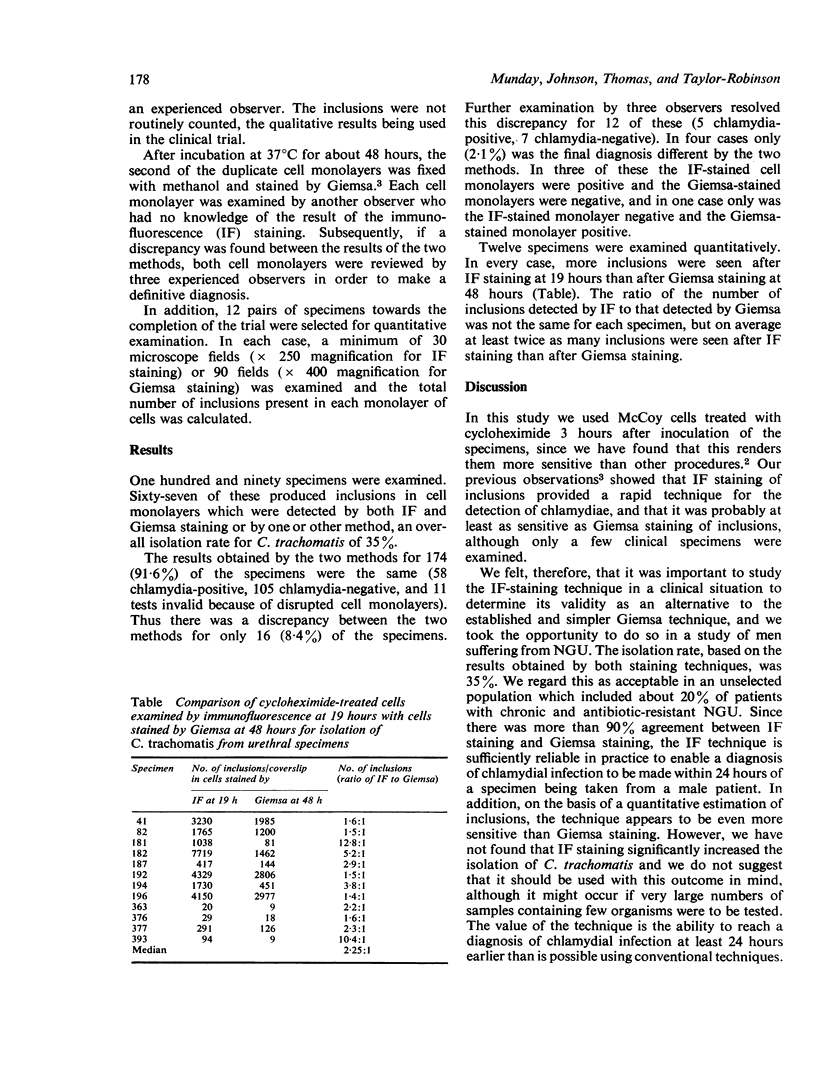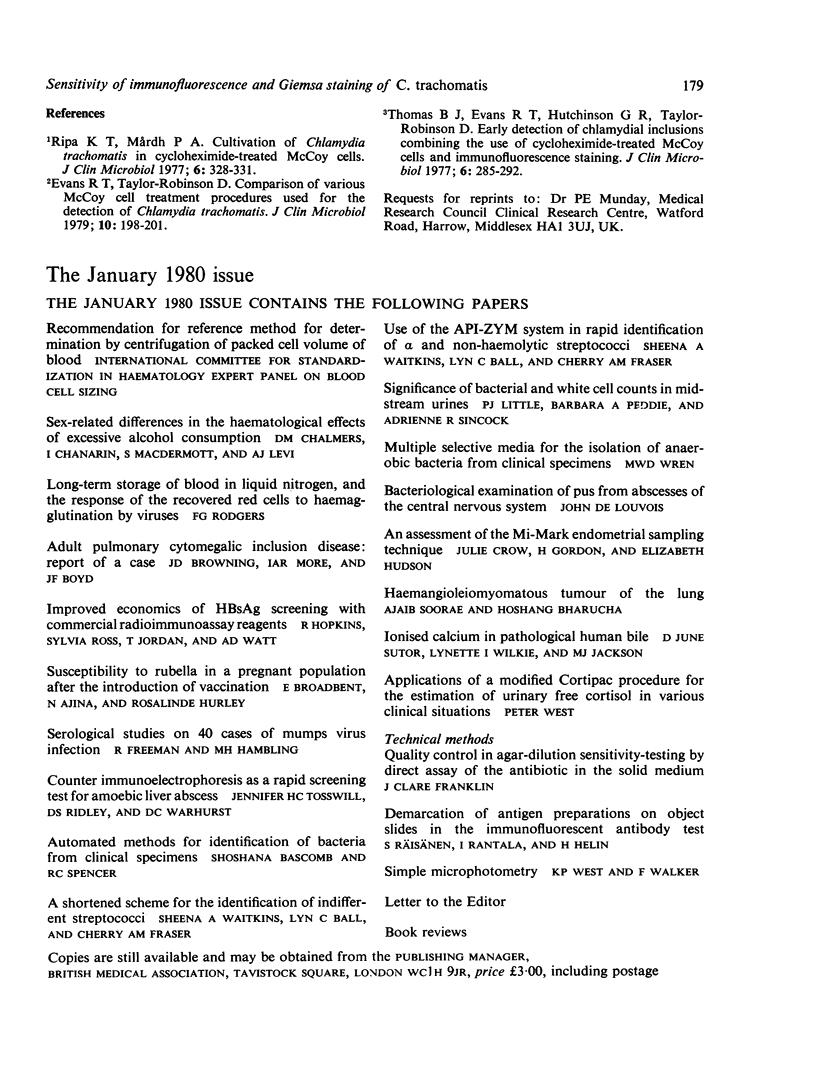Abstract
In a clinical study of 190 men with non-gonococcal urethritis, Chlamydia trachomatis inclusions were sought in cycloheximide-treated McCoy cells by an indirect immunofluorescent antibody technique. The method was consistently reliable over a period of two years, and the results were obtained within 24 hours of a patient's attendance. The results correlated with those obtained by Giemsa staining in 91.6% of patients, and the new method was at least as sensitive as the established Giemsa-staining method.
Full text
PDF


Selected References
These references are in PubMed. This may not be the complete list of references from this article.
- Evans R. T., Taylor-Robinson D. Comparison of various McCoy cell treatment procedures used for detection of Chlamydia trachomatis. J Clin Microbiol. 1979 Aug;10(2):198–201. doi: 10.1128/jcm.10.2.198-201.1979. [DOI] [PMC free article] [PubMed] [Google Scholar]
- Ripa K. T., Mårdh P. A. Cultivation of Chlamydia trachomatis in cycloheximide-treated mccoy cells. J Clin Microbiol. 1977 Oct;6(4):328–331. doi: 10.1128/jcm.6.4.328-331.1977. [DOI] [PMC free article] [PubMed] [Google Scholar]
- Thomas B. J., Evans R. T., Hutchinson G. R., Taylor-Robinson D. Early detection of chlamydial inclusions combining the use of cycloheximide-treated McCoy cells and immunofluorescence staining. J Clin Microbiol. 1977 Sep;6(3):285–292. doi: 10.1128/jcm.6.3.285-292.1977. [DOI] [PMC free article] [PubMed] [Google Scholar]


